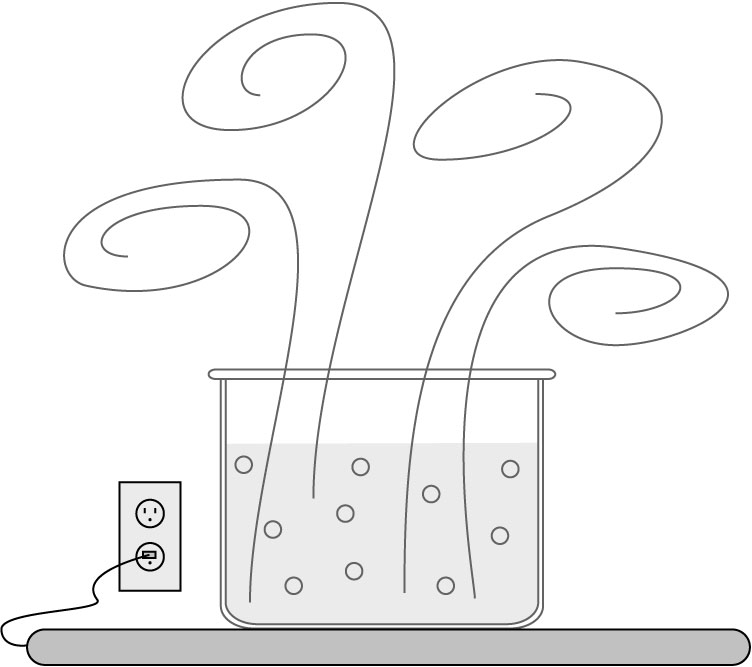Let's use the 1st law of thermodynamics to interpret something we are all familiar with: boiling a liquid. According to the 1st law, there are two ways a thermodynamic system exchanges energy with its surrounds, heat flow and pressure-volume work.
The first stage of boiling a liquid is to heat the liquid to the boiling point. This is practically an isovolumetric process (although there can be interesting problems with the slight volume changes of liquids with changing temperature). If the volume isn't changing, no thermodynamic work is being performed. The heat flow into the system must only be increasing the internal energy. As our liquid's temperature is rising and we are approaching the boiling point, there is an increase in the average translational, rotational, and vibrational kinetic energy of the particles in the liquid.
At the boiling point, however, the temperature is the same for both the liquid and vapor phases. The boiling liquid and the gas produced are at the same temperature. However, the input of heat, the heat of vaporization, is still increasing internal energy, but this internal energy increase is in the form of electrostatic potential energy. As molecules in the liquid phase transition to the gaseous phase, the particles are escaping from their well of mutual binding energy, overcoming the intermolecular forces that bind them as they escape from one other into the gas phase.
However, the internal energy increase does not equal exactly the heat of vaporization. It is important to remember that increasing electrostatic potential energy is not all which is being accomplished by the heat flow into the system during vaporization. As the liquid is transformed into vapor, the system must also expand macroscopically. This means that thermodynamic (pressure-volume) work is being performed against the surroundings. In summary, in terms of the 1st law of thermodynamics, a portion of the heat of vaporization is going into the increase in electrostatic potential energy associated with intermolecular force as particles escape from each other, and a portion of the heat of vaporization performs the pressure-volume work necessary to push the atmosphere back and expand the volume of the system.
The first stage of boiling a liquid is to heat the liquid to the boiling point. This is practically an isovolumetric process (although there can be interesting problems with the slight volume changes of liquids with changing temperature). If the volume isn't changing, no thermodynamic work is being performed. The heat flow into the system must only be increasing the internal energy. As our liquid's temperature is rising and we are approaching the boiling point, there is an increase in the average translational, rotational, and vibrational kinetic energy of the particles in the liquid.
At the boiling point, however, the temperature is the same for both the liquid and vapor phases. The boiling liquid and the gas produced are at the same temperature. However, the input of heat, the heat of vaporization, is still increasing internal energy, but this internal energy increase is in the form of electrostatic potential energy. As molecules in the liquid phase transition to the gaseous phase, the particles are escaping from their well of mutual binding energy, overcoming the intermolecular forces that bind them as they escape from one other into the gas phase.
However, the internal energy increase does not equal exactly the heat of vaporization. It is important to remember that increasing electrostatic potential energy is not all which is being accomplished by the heat flow into the system during vaporization. As the liquid is transformed into vapor, the system must also expand macroscopically. This means that thermodynamic (pressure-volume) work is being performed against the surroundings. In summary, in terms of the 1st law of thermodynamics, a portion of the heat of vaporization is going into the increase in electrostatic potential energy associated with intermolecular force as particles escape from each other, and a portion of the heat of vaporization performs the pressure-volume work necessary to push the atmosphere back and expand the volume of the system.

